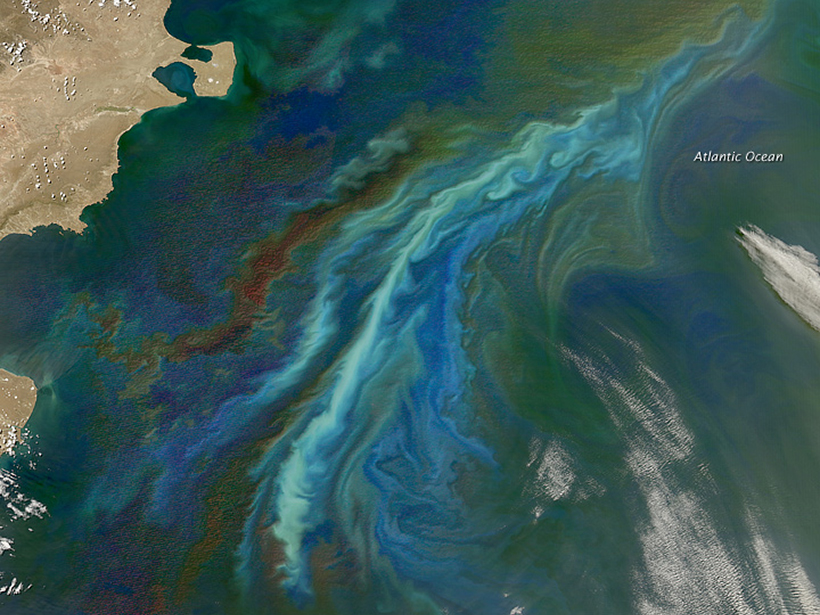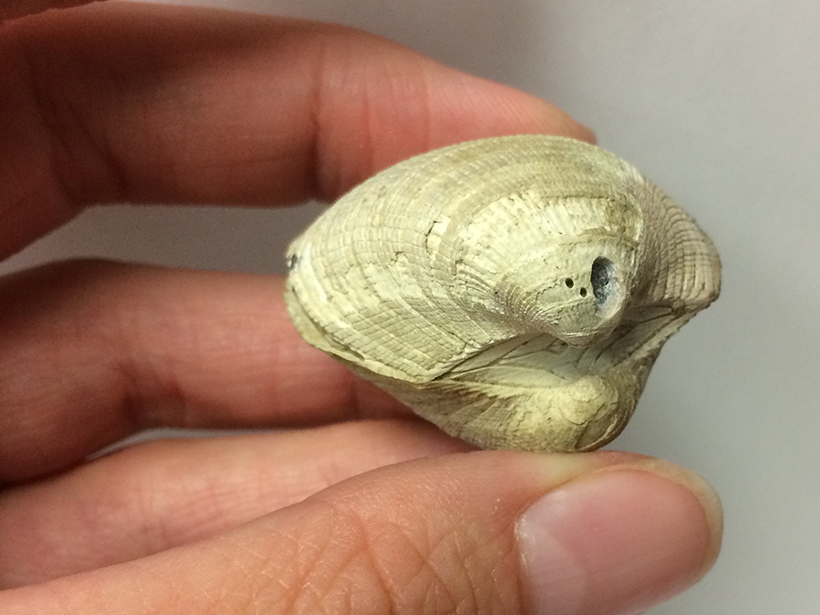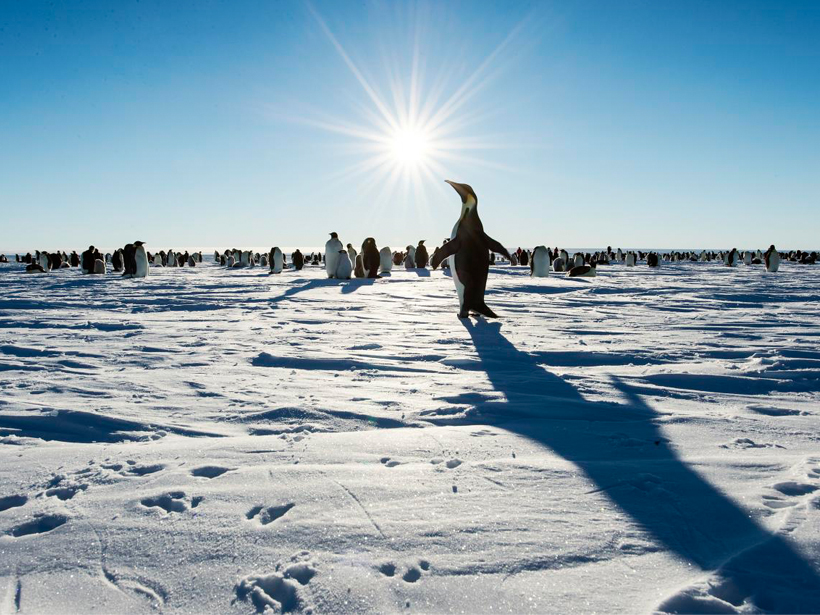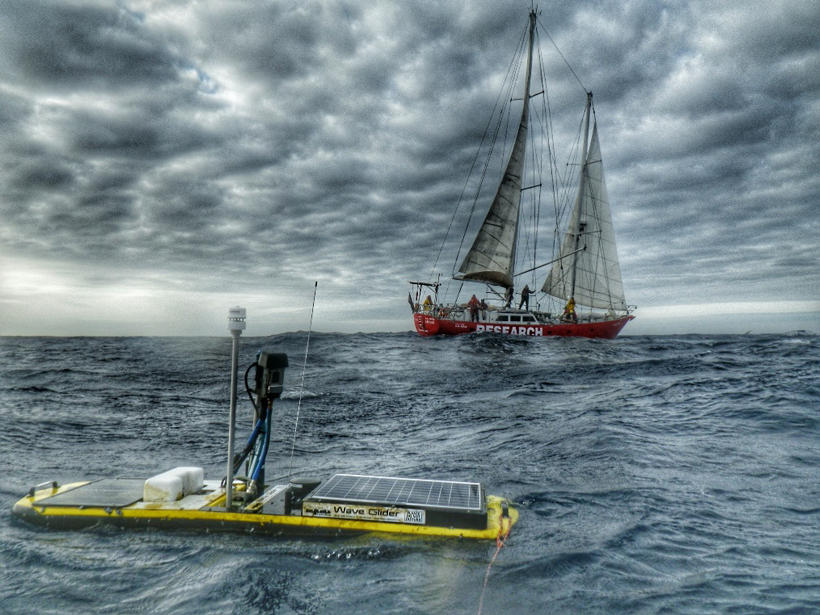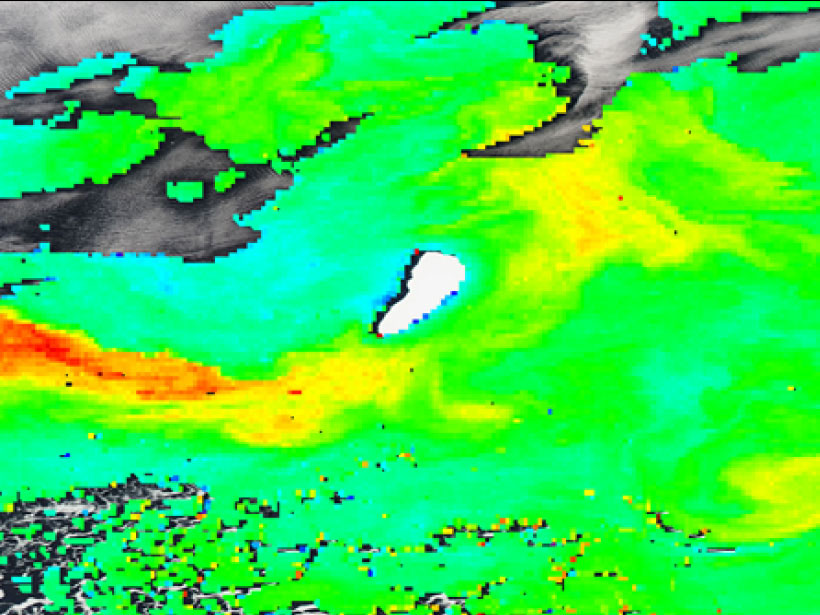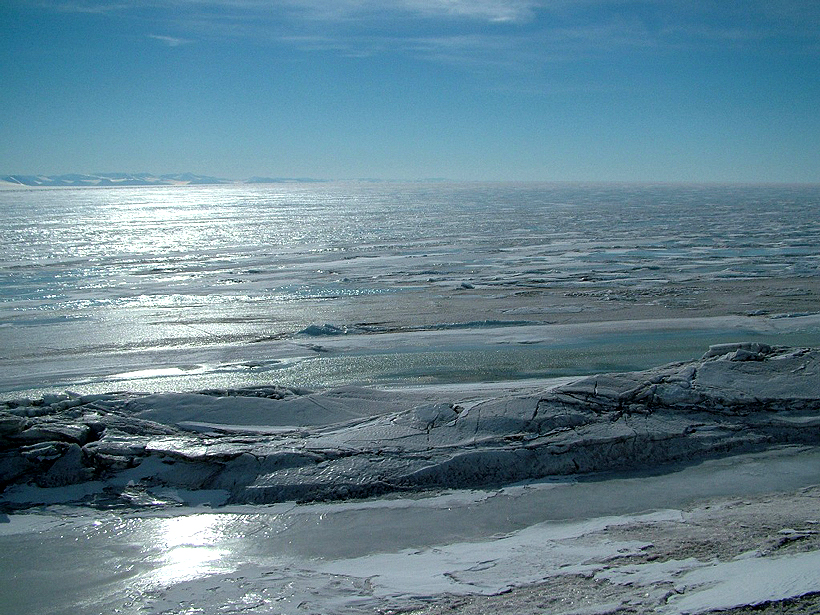A nitrite-oxidizing enzyme may work in reverse for some microbes in the Antarctic autumn.
Southern Ocean
Climate Warming May Have Helped Kill the Dinosaurs
New evidence indicates ancient warming spells that coincided with prodigious volcanism and a powerful meteorite impact, both seen as possible causes of mass extinctions about 66 million years ago.
How Do the Deep Waters of the Antarctic Form?
Researchers uncover new insights into the life cycle of water in the Antarctic region by measuring noble gas concentrations.
New Approaches for Air-Sea Fluxes in the Southern Ocean
Air-Sea Fluxes for the Southern Ocean: Strategies and Requirements for Detecting Physical and Biogeochemical Exchanges; Frascati, Italy, 21–23 September 2015
Antarctic Meltwater Makes the Ocean Warmer and Fresher
Scientists model how Antarctic meltwater from specific locations could affect the Antarctic Bottom Water, ocean temperatures, and salinity.
Climate Change Drives Increasing Snowfall in Western Antarctica
Using ice core records from West Antarctica, researchers look back at the past 300 years of snowfall over the Amundsen Sea.
Icebergs Fertilize Southern Ocean, Sequester Carbon
Huge, drifting ice rafts (the white spot on the satellite image below ) shed minerals as they melt, painting trails of nutrients, teeming phytoplankton, and chlorophyll across hundreds of kilometers of ocean.
Physical-Biogeochemical Coupling in the Southern Ocean
Southern Ocean Dynamics and Biogeochemistry Workshop; Pasadena, California, 2–5 February 2015
How Do Tiny Ice Crystals Help Sea Ice Stay Thick?
Supercooled water contributes to sea ice growth in Antarctica.
Contribution of Weddell Gyre to Global Overturning Circulation
How much does the Weddell Gyre contribute to the Global Overturning Circulation?

